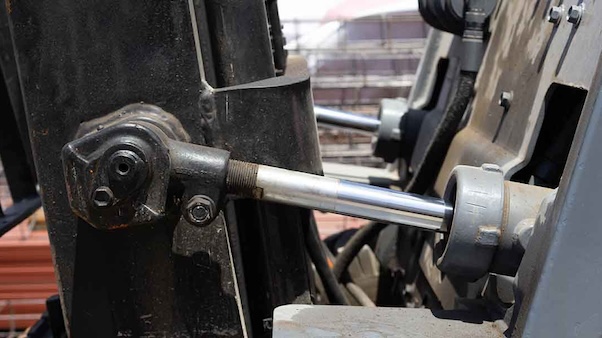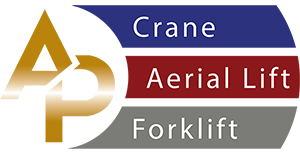
Ever wondered how a forklift is capable of effortlessly lifting and moving heavy loads with precision? The answer lies in its hydraulic system, a marvel of engineering that harnesses the power of fluids to generate motion and force. At the heart of this system is a hydraulic pump, which is responsible for converting mechanical energy into hydraulic energy. This pump pressurizes hydraulic fluid, often oil, and directs it through a network of tubes and hoses to various hydraulic cylinders strategically placed throughout the forklift's structure.
The Power of Fluid Mechanics
The key to the hydraulic system's effectiveness is the principle of fluid mechanics. When pressure is applied to a confined fluid, it transmits that force equally in all directions. This allows the forklift's hydraulic cylinders to convert the pressurized fluid into linear motion, which is then translated into the lifting and tilting actions that define a forklift's functionality.
The Main Components of a Forklift Hydraulic System
Hydraulic Pump: Generating Power
The hydraulic pump is the heart of the system, driven by the forklift's engine. It draws in hydraulic fluid and pressurizes it, creating the force needed for lifting and moving heavy loads.
Hydraulic Fluid: Transmitting Force
Hydraulic fluid, typically oil, serves as the medium through which force is transmitted. It maintains consistent pressure and lubricates components to ensure smooth operation.
Hydraulic Cylinders: Converting Pressure to Motion
These cylinders are where the real action happens. Pressurized hydraulic fluid forces pistons within the cylinders to move, generating the mechanical force required to lift, lower, and tilt the forklift's mast and attachments.
Control Valves: Directing the Flow
Control valves regulate the flow of hydraulic fluid to different cylinders, enabling precise control over the forklift's movements. By adjusting these valves, operators can perform intricate tasks with accuracy.
Coordination Is Key In A Forklift Hydraulic System
Each component plays a crucial role in producing harmonious movement. When the operator engages the controls, hydraulic fluid is directed to specific cylinders, causing pistons to extend or retract. This controlled motion is what allows the forklift to lift heavy loads, navigate tight spaces, and maintain balance while in operation.
From Lift to Tilt
When it's time to lift a load, the hydraulic pump goes to work, pressurizing the hydraulic fluid. This pressure is then directed to the hydraulic cylinders responsible for lifting the forklift's mast. As the cylinders extend, the mast and attached carriage rise gracefully, ready to hoist the load. When tilting is required, the operator adjusts the control valves, directing fluid to the cylinders responsible for tilting the mast forward or backward, allowing for controlled and precise placement of the load.
A forklifts hydraulic system is a remarkable example of fluid power at work, enabling these industrious machines to carry out their duties with precision and efficiency. By understanding the intricate dance of hydraulic components, operators and enthusiasts alike gain a deeper appreciation for the technology that keeps our warehouses, construction sites, and industries moving smoothly. Regular maintenance and adherence to manufacturer guidelines ensure the longevity and optimal performance of this essential system.
Forklift operators may maintain workplace safety and compliance by attending our forklift certification renewal training on a regular basis, which reinforces their skills and knowledge.
FAQs About Forklift Hydraulic Systems
Q1: Can I use any type of hydraulic fluid in my forklift?
While some forklifts may be compatible with a range of hydraulic fluids, it's essential to follow the manufacturer's recommendations. Using the wrong fluid can affect performance and potentially damage components.
Q2: Why does my forklift's mast sometimes lower on its own?
If your forklift's mast lowers unexpectedly, it could indicate a hydraulic fluid leak or a malfunctioning control valve. It's crucial to have a professional technician inspect and repair the system promptly.
Q3: What maintenance does a forklift hydraulic system require?
Regular maintenance includes checking for leaks, monitoring hydraulic fluid levels, and ensuring proper lubrication. It's advisable to schedule routine inspections with a certified technician to prevent potential issues.
Q4: Can a forklift hydraulic system be upgraded or modified for increased performance?
While it's possible to enhance certain aspects of a forklift's hydraulic system, such modifications should be undertaken cautiously and with guidance from experienced professionals. Alterations can impact the overall balance and safety of the machine.
Q5: How do extreme temperatures affect a forklift hydraulic system?
Extreme cold can lead to thicker hydraulic fluid, potentially impacting the system's responsiveness. On the other hand, high temperatures can cause fluid thinning and reduced efficiency. It's advisable to choose hydraulic fluids formulated for the specific temperature range in which the forklift operates.
Learn about our expertise in our forklift practical training guidelines, which give an organized path for learners to develop necessary abilities.
